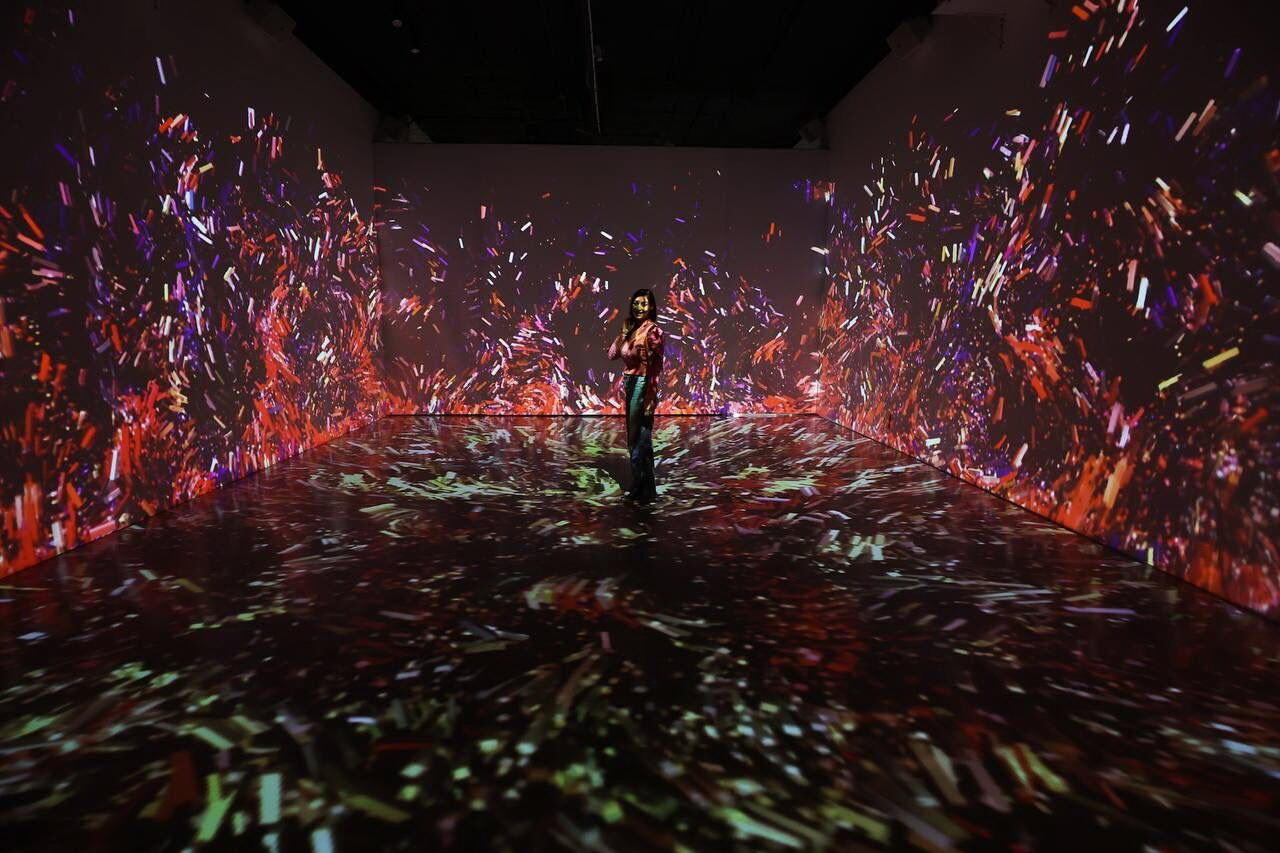Azerbaijani carpets on display in New York [PHOTO]
![Azerbaijani carpets on display in New York [PHOTO]](https://www.azernews.az/media/2022/02/01/gjtihgtyhytj8.jpg)
By Laman Ismayilova
Nowadays technology goes through periods of rapid growth, which opens a wide range of opportunities to use it in various spheres, particularly art. Many artists now use digital technology to extend the reach of creative possibilities.
An artificial intelligence (AI)-driven immersive experience and nonfungible token (NFT) exhibition by Azerbaijani artist Orkhan Mammadov has impressed art lovers in New York.
Curated by Lara Binnet, the exhibition "Revival of Aesthetics" was held by digital art company Blackdove at Lume Studios NYC, Daily Sabah reported.
Through the latest technologies, Mammadov brilliantly shows the unity of the Azerbaijan's rich cultural legacy and the modernity.
The exhibition displays nine art pieces that show Azerbaijan's carpet weaving art in all its beauty.
The art pieces for the exhibition were created by AI with the use of 150,000 Azerbaijani carpets.
Next, the exhibition is expected to open in London and Moscow.
With its unique design and high artistic value, Azerbaijani carpets art is known worldwide.
In 2010, UNESCO included Azerbaijan's carpet weaving art in the Representative List of the Intangible Cultural Heritage.
According to their technical aspects, they are classified as flat-woven (pileless) and knotted (pile).
The flat-woven carpets are linked to the earlier period of carpet weaving. There are several kinds of pileless carpets such as Shadda, Verni, Jejim, Zilli, Sumakh, Kilim and Palas.
Shadda is a flat weave carpet, made primarily in Nakhchivan, Agdam, Gubadly, Agjabadi. The artistic composition of shadda made by complicated whipping, as well as its constituents have a complex form.
One of the most widely spread types of the flat-weave carpet is "verni". The key pattern of "verni" is the S-element. Its shape varies, it may resemble both figure 5 and letter S.
This element means "dragon" among the nomads and “water” among the village people. According to ancient beliefs, a dragon featuring carpet would protect the family from foul weather. Agjabadi, Barda, Aghdam, Nakhchivan are the centers of this type of pileless carpets.
Jejims are woven on simple horizontal looms by narrow stripes 30–35 cm wide and 15–10 cm long. The resulting product is a cloth to be used as a wall carpet, a bedding coverlet, or curtains.
The major jejim production centers are Barda, Nakhchivan, Zangilan, Shusha, Shamakha.
Zilli carpet is characterized by stylized forms of animals and vegetal elements. In terms of their composition and pattern the Azerbaijani zillis are very diverse.
They feature images of large elements in the shape of big lozenges, paired horns, and various stylized elements.
The Sumakh carpets have become widely spread and recognized over the last few centuries. Since the 18th century, they have been made in the country's Guba and Gusar regions.
The Sumakh carpets feature the diverse stylized vegetal motifs, various geometrical elements such as large hexahedral, square, rhomboid medallions.
Kilim is the most widespread type of flat-woven carpets. They are made by passing the weft through the warp using the technique of compound interweaving.
Kilim is characterized by a slot-like gap (opening) around the geometrical patterns.
The technique of kilim weaving predetermines the pattern shapes in the form of a lozenge, triangle, and trapezium. Images of animals, birds and humans are geometrized in kilims.
Kilims of different regions are distinguished by their composition, pattern, and colors. In terms of their technical peculiarities, kilims can be classified into five major groups based on the area of production: Kazakh, Karabakh, Absheron, Shirvan and Tabriz kilims.
Palas is one of the widely spread flat-weave carpets. The palas weaving process consists in passing the weft through the warp by a simple technique.
The weavers decorate the palas by traditional patterns in the form of horizontal stripes commonly used throughout Azerbaijan. As a rule, the palas is not framed by a border.
---
Follow us on Twitter @AzerNewsAz
Here we are to serve you with news right now. It does not cost much, but worth your attention.
Choose to support open, independent, quality journalism and subscribe on a monthly basis.
By subscribing to our online newspaper, you can have full digital access to all news, analysis, and much more.
You can also follow AzerNEWS on Twitter @AzerNewsAz or Facebook @AzerNewsNewspaper
Thank you!






